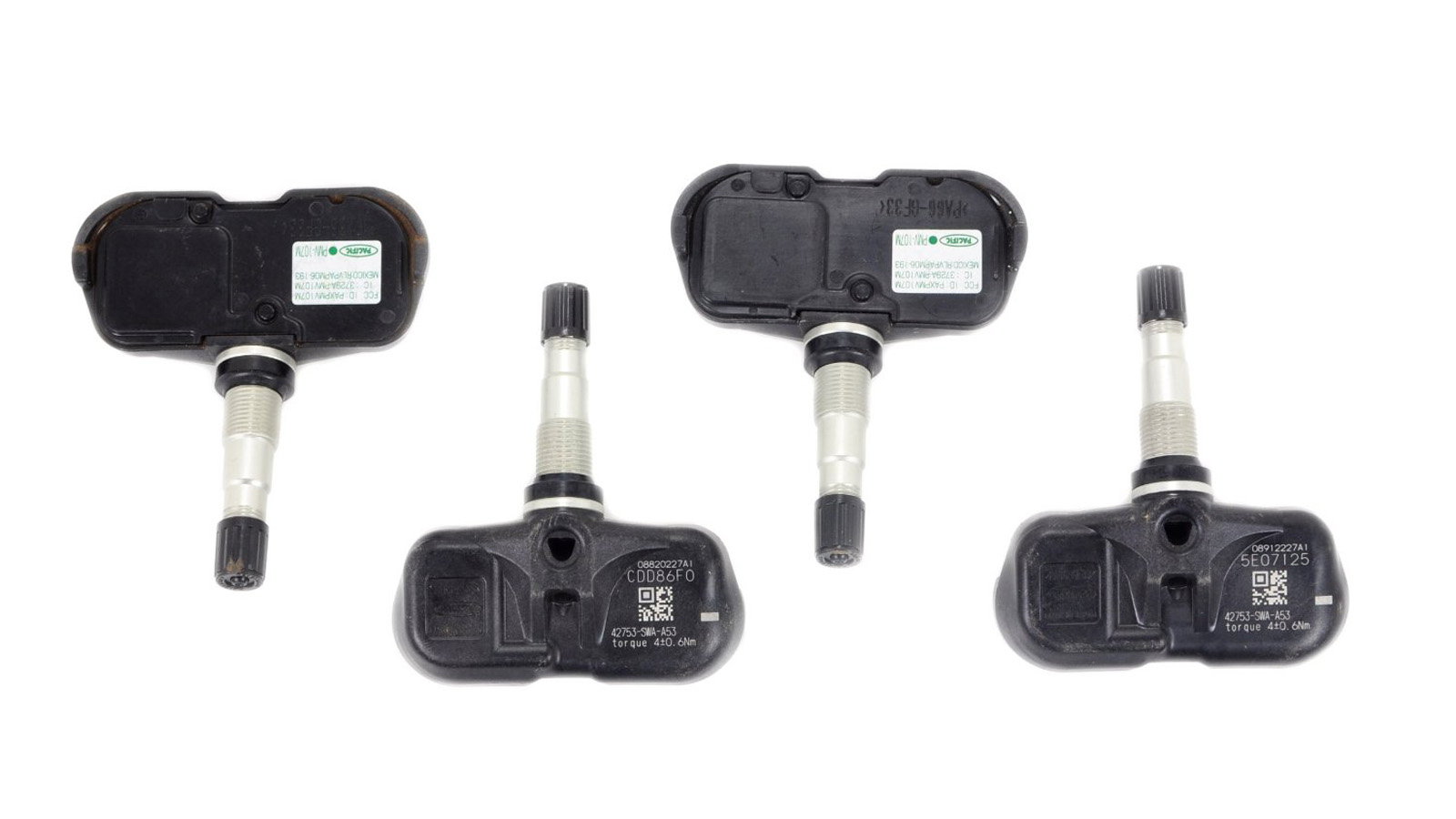Ford Mustang V6 and Mustang GT 1994-2014: Why is My Tire Pressure Light On?
When your tire pressure light comes on, it can indicate something other than low tire pressure. Check out our diagnostic guide and we'll help you get to the bottom of your problem in order to correct it.
This article applies to the Ford Mustang V6 and Mustang GT (1994-2014).
Depending on the model year of your Mustang, it may be equipped with a Tire Pressure Monitoring System (TPMS). The TPMS monitors tire pressure in all four tires and turns on the TPMS light to alert the driver when the tire pressures deviate too far from the recommended range. Sometimes, the sensors have a mind of their own, or go errant without reason. If the light is on but your tires are alright, there may be another issue that needs to be addressed. So, let's take a look around and try troubleshooting your tire pressure light before paying the pros to sort it out.

Materials Needed
- Tire pressure gauge
- Air compressor
- Bottle with soapy water
- Tire plug kit
Step 1 – Check your tire pressure
Your tire might just be low on air.
Generally, a TPMS light will come on simply because your tire(s) is low on air or below the set PSI limit. The sensor in each tire is designed to constantly measure the PSI in your tire and cause the light to illuminate when the pressure falls below the preset number. It is completely normal for tires to lose air slowly over a period of time, which is why most recommend that you check your tire pressure at least on a monthly basis and add air when needed.
Use a tire pressure gauge to check the PSI in each of your tires and an air compressor to add air if needed. Be sure to check the maximum PSI rating for your tires and don't exceed that number. This information is located on your tires, or if you are running factory tires, on the placard in your door jamb.

Once you have filled each tire to the appropriate level, the TPMS light should go off. If not, move on to Step 2.
Step 2 – Check the tire for damage
A puncture or tear could cause the tire to lose air quickly.
If you run over a nail or sharp object, or simply run up against a curb, serious tire damage could occur. This damage could lead to the tire losing air quickly, which would cause a TPMS light to illuminate. Visually inspect each tire and look for any nails or sharp objects that might have punctured it, as well as any tears or other damage. Any sort of tear, rip, or large hole will probably mean that the tire must be replaced. You can also spray soapy water on the tire and look for bubbles to emerge as an indication of a puncture.
Small nail holes can generally be plugged as long as they are not in or too close to the sidewall of the tire. Plug kits are available for less than $5, or you can simply pay a tire shop $5 to $10 to plug it for you. If you are unsure if a hole can be plugged safely or not, it's best to take the tire to a professional for inspection.

If your tires are not damaged or punctured, move on to Step 3.
Step 3 – Check your TPMS sensors
A bad or loose sensor can cause the TPMS light to come on.
TPMS sensors can become dislodged or loose, and can even be damaged or faulty over time. Unfortunately, getting to the sensors is difficult, as you must separate the tire from the wheel. This is a job best left to the dealership or a reputable professional. If you are confident in your ability, however, a TPMS tool is available for around $20 that can reprogram the sensors, and replacement sensors only cost around $24 to $50.

Related Discussions
- Tire Pressure Low Indicator Came On - MustangForums.com
- Tire Pressure Light - MustangForums.com
- Tire Pressure Monitor Light Blinks - MustangForums.com






